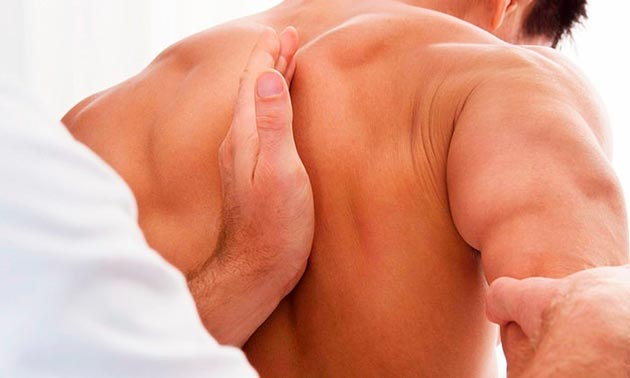Sometimes, it is thought that these two disciplines only serve as a treatment to relieve back pain. However, both therapies are focused on maintaining the overall health of our body.

The osteopathy and chiropractic are two treatments defined as global, i.e., based on precise techniques that act intensely on our body in a broad sense.
That is, not only do they treat back pain or a particular injury, both work the whole body together - albeit in different ways - to achieve a general balance that will help solve specific problems.
OSTEOPATHY SEEKS THE BALANCE OF THE BODY
Among all manual therapies, osteopathy stands out as a method of global diagnosis of the patient and as a rebalancing treatment. The word “osteopathy” comes from Latin and means “way or way” for general normalization.
Its initiator was the American doctor Andrew Taylor Still (1828-1919), and its ideological principle consists in considering in the first place the human body as a functional whole.
It considers that the organism has self - healing capacity through self-regulation, thanks to its defense mechanisms. When there is a structural disorder - be it muscular, in the bones or even in internal organs - that can alter the normal functioning of the body, the function of osteopathy is to normalize the binomial structure-function so that the body recovers normality.
Therefore, osteopathy conceives that the balance between the different parts that make up the physical structure of the body (bones, muscles and soft tissues that support and communicate with each other the different organs) is critical. When there is some tension or blockage in this structure, it is reflected in a bad functioning of the organs and the rest of the physiological systems on which health and well-being depend.
How an osteopath works

Thus, the alterations or diseases occur in different planes, and we should not stay in a single point, be it a muscle or an altered organ.
-
That is why osteopathy acts at different levels: on the fascias (tissues that function as regulators and communicators in the body) superficial and deep, on the muscles or the viscera.
-
To rebalance all the elements, the osteopath has different tools of therapeutic work. They are applied with the hands, but there are also currently external procedures to complement a good job.
-
Thus, the osteopath has techniques for soft, superficial and muscular tissues, deep manipulations, lymphatic drainage or decongestant massage, manual, foot or facial reflexology and pain inhibitory techniques such as acupressure.
-
You can also apply specific manipulations so that the muscles stretch properly or that the patient adopts certain postures so that the muscles relax and pain decreases.
-
Finally, there is a part of osteopathy that works on the movement of fluids and meningeal covers of the central nervous system, and that is called craniosacral osteopathy, and that has its techniques.
CHIROPRACTIC CONNECTS BRAIN AND SPINE
Chiropractic is a therapy derived from osteopathy, but more focused on the treatment of the back. Most people only care about the health of the spine when they suffer the first back pain. However, the vertebral column fulfills a function as important or more than supporting the body and connecting its lower and upper halves with the aid of the trunk muscles.
Think that your column circulates all the information that the brain needs to send and receive so that the body can function well. From the beating of the heart to breathing, walking or digesting: any vital function, any chemical reaction, and any conscious or unconscious movement, no matter how minimal, require the nerve impulses that travel through the spinal cord, lodged in the spine.
The consequences of a displaced vertebra

Keeping the spine healthy and flexible helps, of course, to avoid back pain. But also, and above all, promotes the balance of the nervous system and enhances health. In this crucial role of the spine is based the work of chiropractic, developed in the late nineteenth century by Daniel David Palmer, a Canadian therapist.
Unlike other manual therapies, chiropractic does not massage the tissues to eliminate tension.
-
It focuses on correcting the position of the vertebrae so that the nervous system can undertake its work without interference.
-
If subluxation occurs (displaced cervical vertebra), the communication between the brain and the body ceases to be fluid and problems can appear: from headaches or back to digestive discomfort and even asthma.
How chiropractic adjustment works
The pressures that are applied to correct subluxations are called “adjustments.” They are usually executed with the hands, but sometimes instruments such as wedges, stretchers of moving parts or a hammer called an activator are used, which exert a single rapid and precise pressure.
-
The work focuses on the spine because it has a greater impact on the nervous system, although some chiropractors can also correct musculoskeletal disorders in the extremities.
-
Chiropractors advise not to wait to have discomfort to check the spine because subluxations do not usually give symptoms at the beginning and, the longer it takes, the more difficult it is to correct them. The frequency with which then “adjustments” are received depends on each case and, if one wants, can continue to do so throughout life as preventive care.
-
Chiropractic obtains excellent results in headaches, lumbago, and herniated discs. Although there are many other ailments for which it is useful, adjustments do not treat specific diseases, but correct subluxations so that the body does the rest.
Related Sources:
https://nccih.nih.gov/health/chiropractic/introduction.htm
http://www.palmer.edu/about-us/what-is-chiropractic/
https://www.westernu.edu/osteopathic/osteopathic-departments/nmm-omm/omm-history/
Osteopathy and Chiropractic - What is the Difference?
Building an interconnected community of mindful, purposeful, and healthy individuals